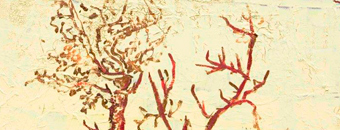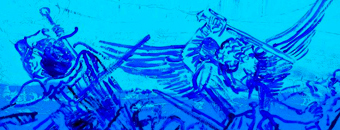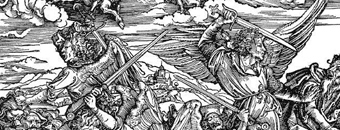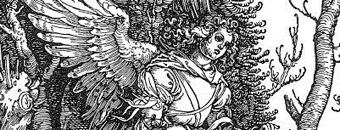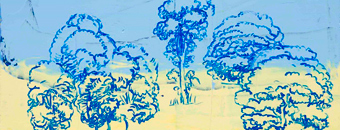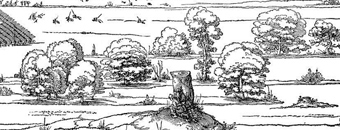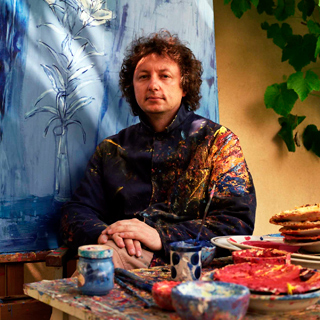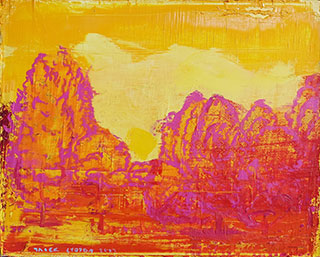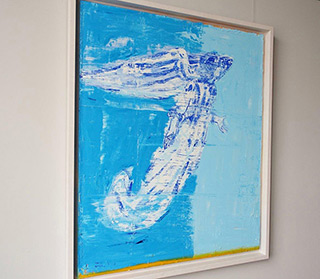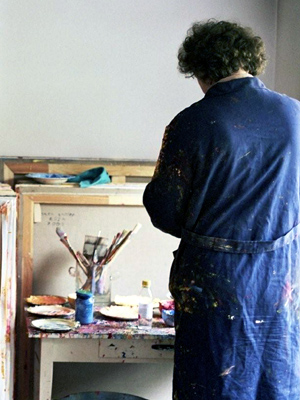Solitaire – a lonely tree
Solitaire – a lonely tree and a painting theme, and a multitude of interpretations and possibilities to ‘read’ the painting. It may be the tree of life, the tree of good and bad news. It all depends on the manner in which it is presented – as the symbol of rebirth, or sin and decay. Or, perhaps, it is just a landmark in space, the beauty and oddity of nature. A puzzle.
The solution to the puzzle is found in Albrecht Dürer’s art, because this painting, just like other recent Jacek Łydżba’s works, is the result of his visits paid to the Print Room in the University of Warsaw Library. Wearing white gloves, he scrutinized the world of the Renaissance master, with the intention to neither copy Dürer’s engravings nor repaint them in a different manner, but to have an intellectual adventure and the pleasure of personally experiencing the works partially known from art catalogues and books, or seen in museums. From all these memorable scenes Jacek would choose single motifs or adopt the atmosphere. This is where his paintings of solitary plants originates from, which makes them distant cousins of Dürer’s turf paintings. The scenes of battling angels, the whirls of fighting dogs, and the representations of warriors echo the famous Four Horsemen of Apocalypse, share the dark mood with Knight, Death and Devil, and emanate some of the meditation and mystery of Melancolia.
These paintings are also created with a very specific choice of colours, forming two poles of heat and cold, the first one represented by yellow, and the latter by blue, constituting Kandinsky’s first great contrast of yellow and blue. The pole of heat ranges from cadmium yellow to orange and vermilion, and the pole of cold from Parisian to cobalt blue and ultramarine.
In Jacek Łydżba’s paintings the colours incorporated into pigments become complete, and sensuality goes hand in hand with decorativeness. The colour of each paint has its own light – sunlight, the clarity of air, the thickness of fog, the hue of sky, shadow, the delicacy of incoming dusk, darkness, the chill of a cold night. However, the paint is never put on in a flat and even manner, since texture is of great importance here. The painter creates the atmosphere and temperature of the painting by means of numerous layers, under which various colour schemes peep. ‘For me colour is materialized sensitivity,’ declared Yves Klein.
The Solitaire was not a solitary tree, but part of the complex scene in Dürer’s Joachim and the Angel. The puzzle has been solved. The solitary tree in Jacek Łydżba’s painting has a new meaning now.



